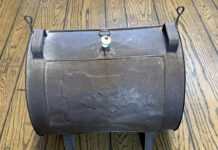We sometimes attempt to deny reality as a coping mechanism for an issue we simply don’t want to deal with if accepting the reality is too painful; or we deny reality with the hopeful anticipation that the conditions will change.
These behaviors sometimes exist relative to the economics of dairy farming.
Hope
Even for me as a nutritionist, I have been sharing the typical feed costs benchmarks for lactating and dry cows, and heifers and then sharing the present feed costs. What I have come to realize is that I have been holding on to the historical feed costs, with the hopeful anticipation that the costs will return to lower levels.
However, at the present and for the foreseeable future, the historical feed costs can no longer be regarded as typical and the present high feed costs have become the norm. So some general benchmarks for feed costs are:
• $10/cwt of milk for herd feed costs (includes lactating and dry cows and heifers).
• $7/cwt of milk for feed costs for lactating and dry cows (e.g., heifers raised off the farm).
• The cost of DM for lactating cow rations will generally range from $0.09 to 0.11/lb.
• At the present milk price of about $21/cwt and the assumed feed costs of $10/cwt, then about $11/cwt of milk remain for all other costs of producing milk.
• It appears that the milk price will be declining in 2012, especially by midyear, but feed costs will not likely change much. Thus income over feed costs will be falling to less than $10/cwt by mid 2012. This reality needs to be embraced and plans established for managing the dairy farm with these conditions.
Challenges
The weather conditions this crop year presented several challenges. It was a very wet spring and crops were planted quite late, resulting in a late harvest and late applications of manure to harvested fields.
Overall, the yields of forage appear to be quite good for this year’s cropping season, but a considerable amount of variation occurred in time of planting and the precipitation during the growing season varied by month and area of the state (or even county).
The first frosts in some areas and the intermittent rains during harvest presented several challenges in getting corn silage harvested that was planted late. These conditions, especially the rain, made it difficult to the silo sealed quickly.
Review
So the following realities need to be reviewed:
• Inventory: Do you have enough corn silage to feed until the next crop is harvested in 2012, maybe September if a normal year or during October or November if the cropping season is a repeat of 2011.
• Quality: A feed analysis needs to be done before the new crop of corn silage is fed and then conducted routinely during the feedout. Quality may be quite variable given the growing and harvesting conditions in 2011.
In review of some of the samples already analyzed from the 2011 crop reveal that NDF may be about 42 percent, similar to 2011, which is lower than the typical of 45 percent. So rations need to be adjusted accordingly based on farm analyses.
Some of the corn silage was harvested quite dry (less than 40 percent DM, even when storing in bunker silos), and the bunkers were not filled and covered very quickly. So DM is going to need to be tested weekly and rations adjusted accordingly.
Mold
In addition, presence of molds and potential mycotoxins need to be assessed early on, rather than waiting until production plummets or some animals die. Embrace the reality that you may have some quality issues with the corn silage in storage.
Successful dairy farming today as the primary source of family income requires a keen sense of reality; otherwise, reality will grab you from the backside. When this happens, a tremendous amount of effort is needed to break loose. Why not embrace reality and make your management decisions based on these principles and guard your business against the associated risks?












